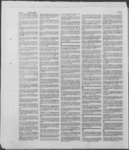| Show 7 1MEN'S HEALTH7-7Men at any age may experience the pain and urinary problems that accompany prostati tis 1 While the cause can be hard to find relief is possible vv nen Your Prostate Is Inflamed By Dr Isadore Rosenfeld ROSTATITIS IS AN ) inflammation and of the prostate gland Affecting an estimated SO of men swelling sometime during their I life it is the third most common uro- logical disorder in men under age SO and the most common in those over SO An inflamed prostate typically Seminal Urinary I msicie bladder causes pain in the pelvic region (particularly under the scrotum) lower abdomen and back and is accompanied by frequent urges to "go" and a burning sensation when you do There also may be pain during sexual arousal and ejaculation Prostatitis usually does not affect potency but erectile dysfunction sometimes can occur Most people believe—mistakenly— that prostatitis is simply an infection that develops only in men with enlarged prostates The fact is that such infection is present in only 5 to 10 of all cases of prostatitis A normal prostate gland is the size of a walnut It is situated below the bladder in front of the rectum within the doctoes reach dura ing digital rectal exam) and wraps around the urethra the tube that carries urine from the bladder out through the penis The prostate is responsible for much of men's misery It is a major site of cancer it gets bigger as we grow older almost always resulting in the need to urinate frequently (some(well Prostate gland -- i Urethra Discharge (indicates bacterial prostatitis) IN BACTERIAL PROSTATMS an Inflamed prostate gland (under the bladder) exudes a discharge (shown In yellow) Into the urethra the canal that carries urine to the exterior A seminal vesicle—iNhkh along with the prostate produces seminal fluid— also can become infected Who's At Risk? acute You're most tkely to get bacterial prostattis—the most sows form though treatable -l-ifruha An enlarged prostate Obstruction to the flow of urine so that It backs up and becomes infected A prostate stone or tumor A urinary catheter inserted Into the urethra (usually during or after an operation when you can't void on your own) Oral or anal sex A sexually transmitted disease such as gonorrhea Diabetes A suppressed immune system A recent urinary bladder Infection I've found that while most men know where their prostate is located and what it does to them they have no idea what it doesfor them The prostate gland makes the ing the night and it can become fluid in which sperm is transported During the male orgasm its muscles contract to squeeze this fluid into the urethra to form the ejaculate Without a prostate there would be lots less pleasure in life and nothing in which the sperm can swim to meet the egg and create a child There are three kinds of prostatids: Acute bacterial prostatitis the inflamed (prostatitis) Despite all this most uncomfortable but least times with difficulty) especially dur- - Pain in the pelvic region lower back and genitals is common in all types of prostatitis So are urinary frequency and burning common often comes on sud denly and is due to infection from bacteria that enter the prostate from the urinary tract (or much less commonly from the blood- stream) It causes pelvic pain Ire- quent painful urination with or without the need to "go" urgently sometimes chills and fever and possibly blood in the urine It's the "best" kind of prostatitis to have because the infecting organism can be identified early by culturing the urine When treated promptly with i § c7 5 the appropriate antibiotic the problem usually clears up Chronic bacterial prostatitis is infection and inflammation of the E prostate that keeps coming back The symptoms are similar to those of the acute form but usually are less severe Again bacteria are the cause ! and treatment consists of eradicating them with antibiotics If pro- scalds keeps returning the entire genito-urinartract should be evaluated to determine the cause k and correct it Chronic prostatitis (also called Lt" y chronic pelvic pain syndrome) is the most common form of prostatids PAGE 8 juNE 20 2004 PARADE og |

































































































































































































